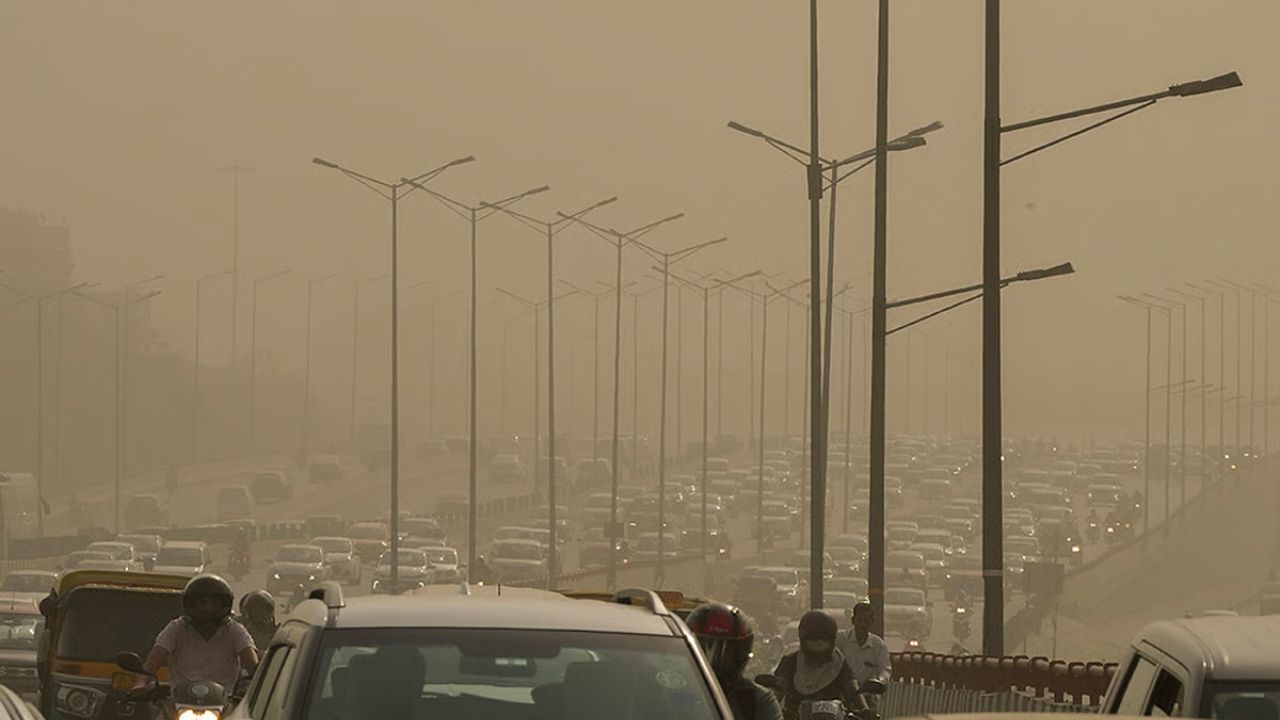Delhi AQI stays in the ‘very poor’ category; ‘drone-based mist spraying’ initiates at Anand Vihar and other pollution hotspots | Details
The air quality in Delhi remained in the “very poor” category on Saturday, marking the ninth consecutive day of severe smog following Diwali. According to SAFAR data, the Air Quality Index (AQI) was recorded at

The air quality in Delhi remained in the “very poor” category on Saturday, marking the ninth consecutive day of severe smog following Diwali. According to SAFAR data, the Air Quality Index (AQI) was recorded at 358 at 9 am, classifying the air quality as “very poor.” Visuals from Kartavya Path showed a thick layer of smog blanketing the area. Data from the CPCB’s Sameer App indicated that air quality at Bawana and New Moti Bagh stations was in the “severe” category, with AQI readings of 409 at both locations.
To combat the hazardous air quality, authorities deployed a truck-mounted water sprinkler, which was seen releasing fine mist at Anand Vihar, one of Delhi’s major pollution hotspots. The water droplets aim to alleviate the effects of the toxic air.
AQI in Other Areas
Other parts of Delhi also reported high AQI levels, with Bawana at 409, Alipur at 387, Anand Vihar at 393, Dwarka Sector 8 at 362, IGI Airport at 344, Dilsad Garden at 220, ITO at 359, Mundka at 377, Najafgarh at 379, New Moti Bagh at 411, Patparganj at 389, RK Puram at 376, and Wazirpur at 399. Akshardham, a major tourist and transport hub, recorded an AQI of 393, which is categorized as “very poor.”
The AQI scale is categorized as: 0-50 is ‘good,’ 51-100 is ‘satisfactory,’ 101-200 is ‘moderate,’ 201-300 is ‘poor,’ 301-400 is ‘very poor,’ and 401-500 is ‘severe.’
Drone-Based Mist Spraying
In a bid to combat the high pollution levels, the Delhi government launched a pilot project for ‘drone-based mist spraying’ at Anand Vihar on Friday. Delhi Environment Minister Gopal Rai explained that pollution in hotspots like Anand Vihar was higher than the city’s average AQI, making the area a priority for the new intervention.
The drones used in this trial can carry up to 15 litres of water and release a fine mist to help reduce airborne pollutants, especially in congested areas where traditional methods like road spraying are less effective. Minister Rai stated that a report on the effectiveness of this technology would be submitted to the Environment Department and the Delhi Pollution Control Committee (DPCC) for further analysis.
This initiative is part of the Delhi government’s broader Winter Action Plan, which includes 21 key actions to combat pollution during the colder months. As part of this plan, drones are being explored as an innovative solution to address pollution in areas that are difficult to reach using traditional methods.
Additionally, the Delhi government has set up action plans for 13 major pollution hotspots across the city, where 13 coordination teams are addressing local sources of pollution. To control dust pollution on roads and open areas, the government has deployed 80 mobile anti-smog guns and 68 stationary anti-smog guns at key hotspots. The Municipal Corporation of Delhi (MCD) has been instructed to increase inspections in these areas, and officials from 13 departments are monitoring construction sites to ensure adherence to anti-pollution guidelines.
Health Concerns and Rising Complaints
As air pollution continues to affect the capital, residents have expressed growing concern about their health. Many locals reported experiencing symptoms such as breathing difficulties, headaches, coughing, and cold-related illnesses. One resident explained, “Pollution is especially hard on the elderly and those with pre-existing health conditions. It’s causing respiratory issues, and the AQI level has been rising daily since Diwali.”
A cyclist near India Gate added, “Delhi’s pollution is caused by multiple factors—stubble burning, vehicular emissions, and firecracker use. There’s no one cause and, therefore, no single solution. Everyone needs to contribute to reducing pollution.”
Another resident shared, “Pollution is getting worse every year, and the climate is also being affected. This is leading to more health problems, especially for older people and those with asthma. The younger generation is now being impacted too.”
Dr Bobby Bhalotra, Vice Chairman of Respiratory Medicine at Sir Ganga Ram Hospital, pointed out a clear link between rising AQI levels and an increase in respiratory problems. “As the AQI rises, we see more patients suffering from breathlessness. Many are struggling with sleepless nights due to persistent coughing. Those with asthma, COPD, chronic smokers, and workers exposed to dust, like police personnel, are especially vulnerable,” he said. Dr Bhalotra stressed the importance of collective action in reducing pollution levels and minimizing exposure to harmful air quality.





